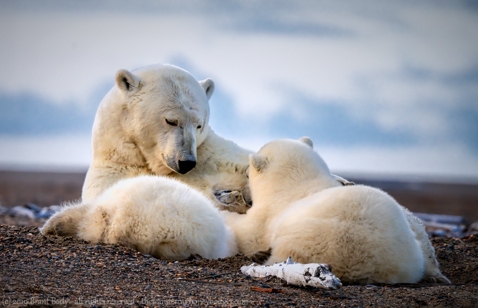
Like most marine mammals, polar bear milk is supercharged, in that it’s about 30% fat content. The cubs nurse for as little as 18 months, up to as long as 30 months when they eventually leave their mothers.
The main staple food for adult polar bears would be Ring and Bearded Seals (70%). Adult bears will often just eat the skin and blubber of a seal. This high fat diet not only provides maximum energy, but also reduces other bodily functions that would result in water loss. Polar bears also feed on young or injured Walrus, Beluga Whales, Narwhals, and White Beaked Dolphins. Occasionally some land based prey like Arctic Foxes, birds etc., are included in their diet. They will also vegetation like kelp as noted in many of the photos (kelp being a great source of minerals).
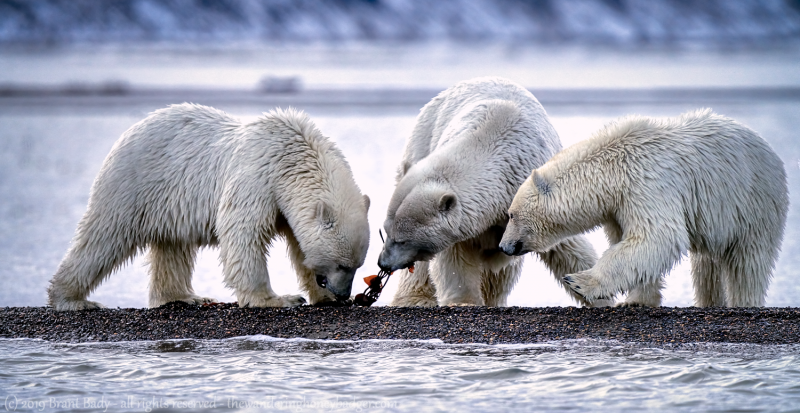
Polar bears can eat up to 30 kg a day, but summer time is usually fasting time, where they may not eat anything significant for 3 to 4 months.
Adept on land and in water, polar bears can swim 100 km or more, and apparently they can sniff out their favourite dinner (seals) up to 32 km away if the seal above water, and 1 km away if the seal is 1 meter under the ice.
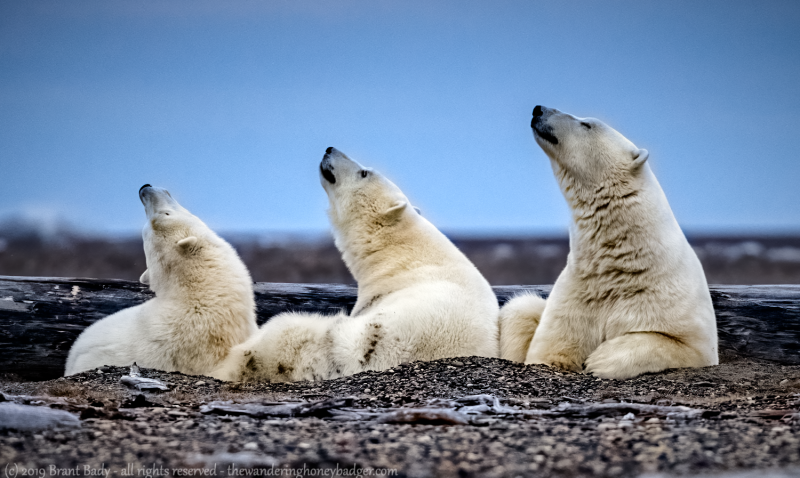
The classic “Nose in the Air” pose of “Nanook” – The Polar Bear
They can quickly dispatch a seal with a single bite and literally drag the whole seal out of the water using their strong neck and shoulder muscles.
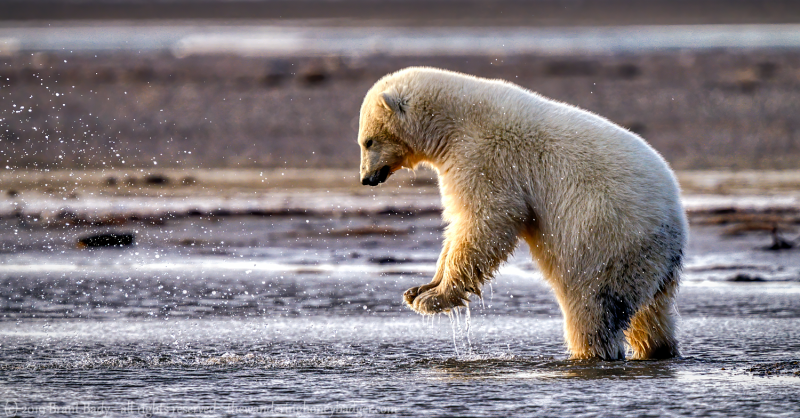
Another classic polar bear maneuver, often seen when the bears are feeding. The bears know how to use their weight very effectively to break through ice by keeping their front legs straight and bouncing up and down.
Their 5 cm claws are also deadly sharp and also used for grabbing and traction. At up to 680kg, they are the largest carnivores on the planet!
Reflecting Bear – Do I look fat, like I need to be?
This bear, like all his/her pals in the vicinity, looks fat and sassy compared to some others in the world that are skinny and starving.
In this location, the other main attraction for the bears, besides town and possibly trying to get into refuse bins, is the town “whale bone pile”. The local people in the village have an annual whale hunt for food, and the leftover whale carcasses and bones are piled up on a reef near town, which makes good eating for polar bears. The whale bone pile even provides some sustenance for the occasional grizzly bear, although quite far from the normal range for grizzlies, this does provide yet more evidence of how climate change is affecting the animals and changing their normal habits.
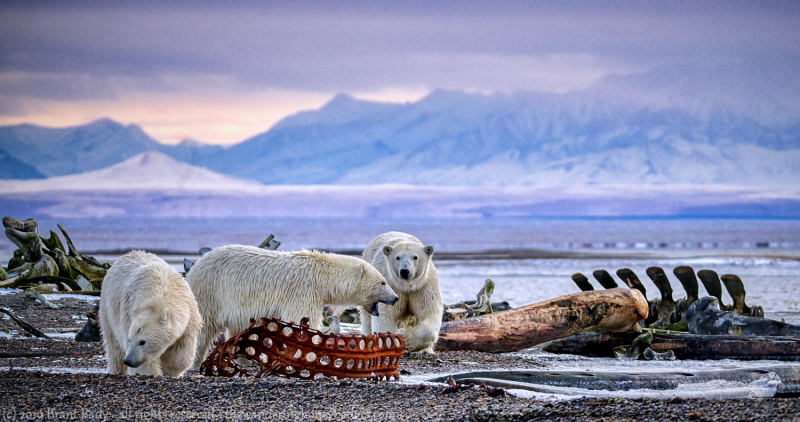
These bears are habituated to checking out the local whale bone pile, almost on a daily basis, even though it is October at this point and the whale carcases were stripped of any sustenance months ago by the bears, birds and other scavengers. Climate change IS affecting their behaviour, even here.
Please do help support their ongoing survival and give a donation to Polar Bears International and do continue to come back for the rest of the posts in this series!

